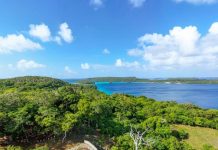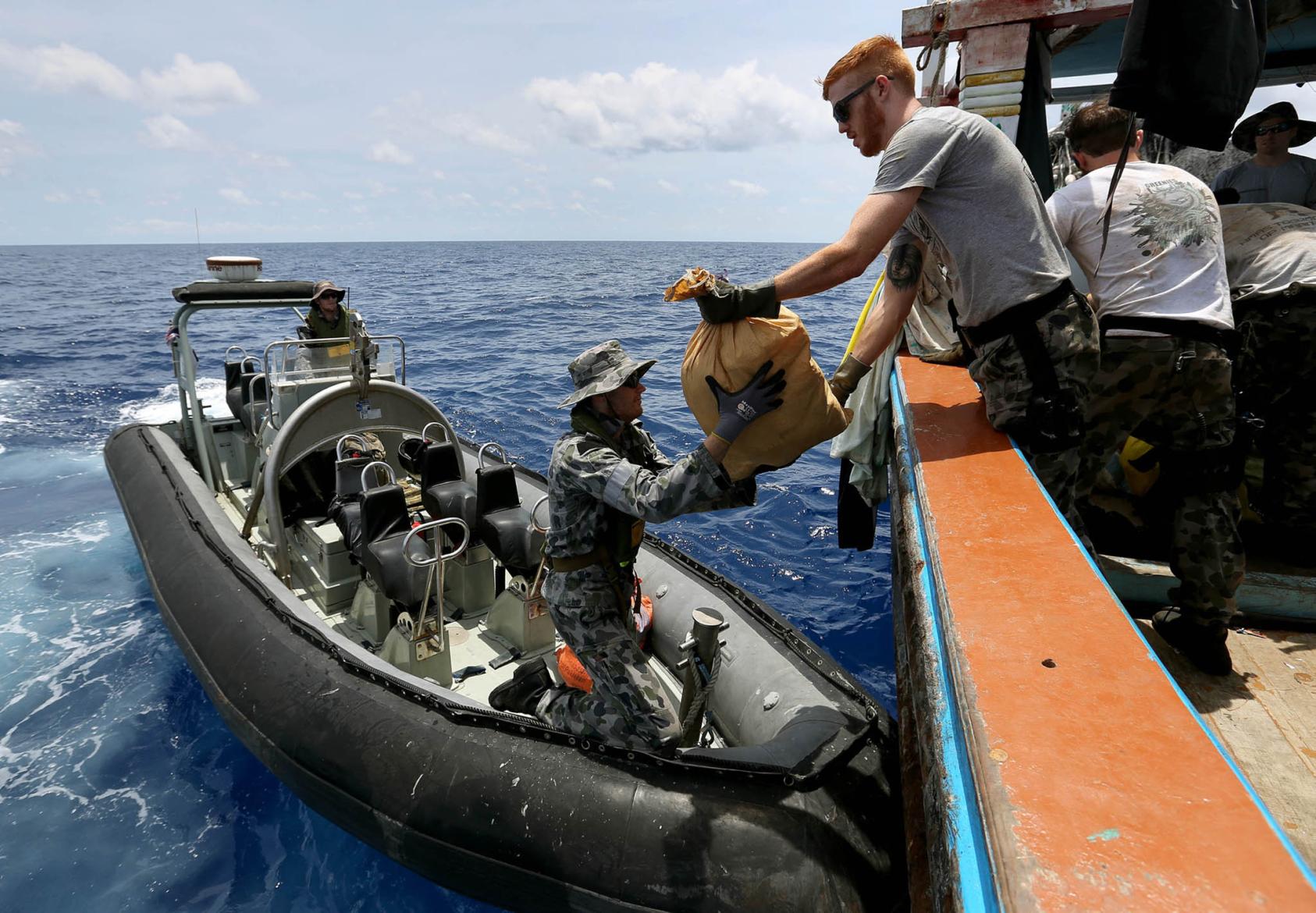By Jose Sousa-Santos
In January, Fiji police seized more than four tonnes of methamphetamine during two raids in Nadi, marking one of the largest drug seizures in the country’s history. But while Fiji police made the seizure, they weren’t working alone. Such a significant law enforcement operation would not have been possible without the immense multi-jurisdictional, cross-border coordination between Fiji’s police, the Australian Federal Police and the Pacific Transnational Crime Coordination Centre.
However, sustained and effective cooperation and coordination between those agencies tasked with countering transnational crime has a patchy track record despite the threat such criminal activity poses to the region — a threat that is growing rapidly. Without a more unified effort from Pacific countries, transnational crime threatens to undermine security and stability throughout the region.
Transnational Crime Undermines Security in the Pacific
The threat of transnational crime is not new in the Pacific, nor has it gone unaddressed by regional leaders.
In 1992, the Pacific Islands Forum’s Honiara Declaration recognised that transnational crime was a growing concern for the region’s law enforcement agencies and called for Pacific nations to adopt a “more comprehensive, integrated and collaborative approach.”
In 2002, the Pacific Transnational Crime Network established a “hub and spokes” system of 28 transnational crime units across 20 Pacific countries with intelligence-sharing and investigative powers.
Later, in 2018, transnational crime was again cited in the Pacific Islands Forum’s Boe Declaration on Regional Security as one of four key security challenges facing the region. And in 2019, the Transnational Serious Organised Crime Pacific Taskforce was established by Australian, New Zealand, Fijian and Tongan police forces. That year Pacific Islands chiefs of police developed the Pacific Methamphetamine Action Plan and in mid-2024 the Pacific Islands Forum launched the inaugural Regional Transnational Organised Crime Disruption Strategy.
The illicit drug trade is the most prevalent form of transnational crime in the region, and the impact on Pacific societies and communities has significantly increased.
But over the past five years there has been a clear evolution in drug trafficking in the Pacific. The illicit drug trade is the most prevalent form of transnational crime in the region, and the impact on Pacific societies and communities has significantly increased. There is growing evidence and recognition that transnational crime generates significant insecurity across communities and societies, as well as facilitates corruption, weakens key security sectors and undermines formal and informal governance processes — including the disruption of traditional and cultural mechanisms.
Not surprisingly, transnational crime — and specifically the illicit drug trade — is now seen as a pressing threat to national and regional security. Of the five Pacific Island countries that have developed national security strategies in accordance with the Boe Declaration, all identify transnational crime as a national security threat rather than solely a law enforcement issue.
Solomon Islands’ national security strategy lists securing its borders and territory against transnational crime as the second of 12 national security goals. Meanwhile, Samoa’s national security policy specifically identifies outlaw motorcycle gangs as an “emerging threat” that could lead to higher levels of violence in the country. The Cook Islands National Security Policy (2023-2026) calls for the development of a national transnational organized crime strategy.
All five countries also single out illicit drugs, identifying the spill-over of drug abuse into local communities as key security issues as well. For example, Palau’s national security strategy highlights the negative health effects of illicit drug abuse and the drain on Palau’s health care system; and Cook Islands cites the link between illicit drugs and other transnational crime types on border security, public health and government corruption.
Gaps in the Pacific’s Regional Security Architecture
The region and the security architecture that’s charged with preventing and responding to transnational crime has rapidly elevated its response over the past five years and become increasingly agile.
For example, in 2019, Tonga adopted a national policy on illicit drugs with the support of the Pacific Islands Forum. This heralded the first Pacific Islands Forum intervention in a member country on issues relating to illicit drugs — an intervention that helped propel an amended Tongan Illicit Drug Control Act through the Tongan parliament in 2020. The Tonga Police Drug Enforcement Taskforce was then established. In the first year of its operation, the taskforce made 263 arrests and seized over 30 kg of methamphetamines with a street value of more than 25 million Australian dollars.
However, despite these efforts, the regional architecture has also been found to be lacking. Inadequate resourcing — as well as a high dependency on resourcing from Australia and New Zealand — coupled with low levels of trust and poor information sharing between member countries and agencies has led to the siloing of crime types across agencies and coordination challenges that have inhibited success.
These weaknesses have been amplified by the increasing number of external partners engaged in the Pacific, with Pacific security agencies now finding themselves at the centre of strategic competition in the region. This has challenged the absorptive capacity of small Pacific security agencies and undermined their ability to leverage heightened geostrategic interest for national or institutional gain.
Strategic competition not only diverts Pacific Island nations’ institutional capacity — it has also introduced new, complicated dynamics to transnational crime in the Pacific. At a Five Eyes Law Enforcement Group meeting in 2022, Australian Federal Police Commissioner Reece Kershaw explicitly linked state actors and transnational crime, arguing that organized criminals “are advancing the interests of their homeland.”
The recent case of Zhao Fugang, a Chinese-born naturalised citizen of Fiji, illustrates Kershaw’s point. Zhao is nominally a businessman with close connections to the Chinese Communist Party. But since at least 2021, Australian law enforcement has designated Zhao as a senior member of a transnational criminal syndicate that has been active in the region for decades. In their assessment, Australian law enforcement agencies specifically referenced the overlap between Zhao’s criminal activity and his political connections, saying he “likely has good access to corrupt officials.”
Furthermore, the Australian Criminal Intelligence Commission added Zhao to its registry of Australian Priority Organisation Targets in mid-2023, suggesting that Zhao is seen to be a significant security threat to Australia.
How to Improve Law Enforcement Architecture in the Pacific?
The Boe Declaration Action Plan identified the need to improve information and intelligence sharing across Pacific agencies — and proposed two ways to avoid obvious gaps in the architecture.
The first deals with the matter of criminal deportees. The action plan called for strengthened information sharing and coordination between the sending countries (namely the United States, Australia and New Zealand) and recipient countries, as well as efficient information sharing on outlaw motorcycle gangs. Notably the Cook Islands’ national security policy calls for a system with external partners to ensure Cook Islands authorities are pre-warned on criminal deportees.
As strategic competition leads to an increasingly crowded region, transnational crime has become a mechanism for both disruption and engagement.
Second, the action plan called for an updated, fit-for-purpose Pacific Transnational Crime Network — with particularly focus on its Pacific Transnational Crime Coordination Centre — to improve information and intelligence sharing. The need for improved multi-agency engagement and collaboration was further echoed at the inaugural Pacific Regional Law Enforcement Conference in 2022.
At a critical juncture in the review of the regional architecture, Australia is advancing the Pacific Policing Initiative (PPI) as a solution to both strengthening regional law enforcement and Australia’s position as the security partner of choice in the Pacific. It is unclear at this stage where the PPI sits within existing regional law enforcement architecture and how it bolsters it.
The challenges facing the agencies and architecture in countering transnational crime are not unique to the Pacific. But as strategic competition leads to an increasingly crowded region, transnational crime has become a mechanism for both disruption and engagement.
It is therefore critical, as the Pacific Islands Forum reviews the regional architecture, that the instruments tasked with combating transnational crime are agile, adaptive and culturally appropriate to ensure the foregrounding of Pacific knowledge and context-specific expertise. This means an architecture which is Pacific-led and partner-supported and pro-actively incorporates non-state actors such as communities, churches and civil society.
Jose Sousa-Santos is an associate professor of practice (Adjunct) at the Macmillan Brown Pacific Studies Centre at the University of Canterbury.















